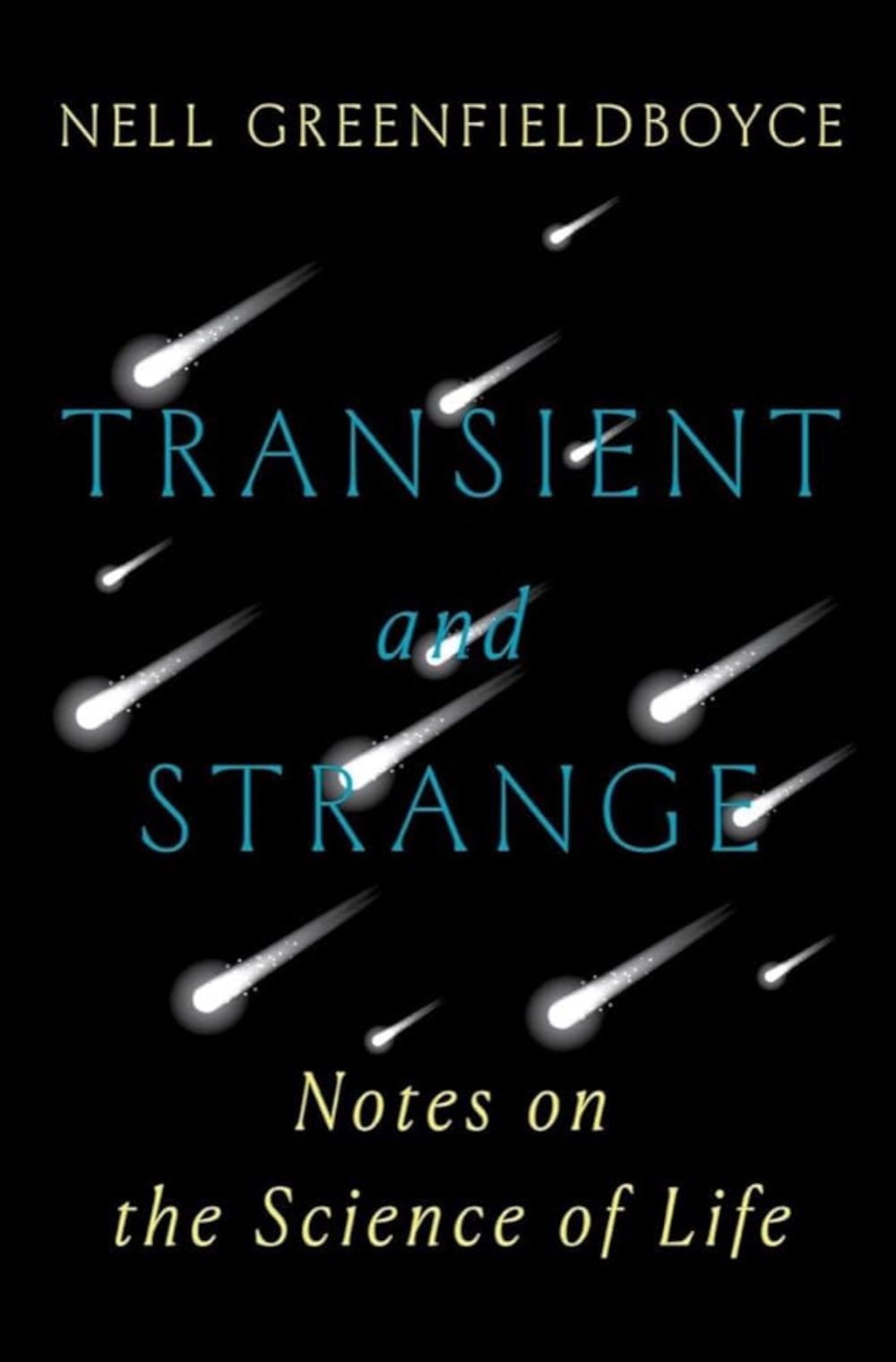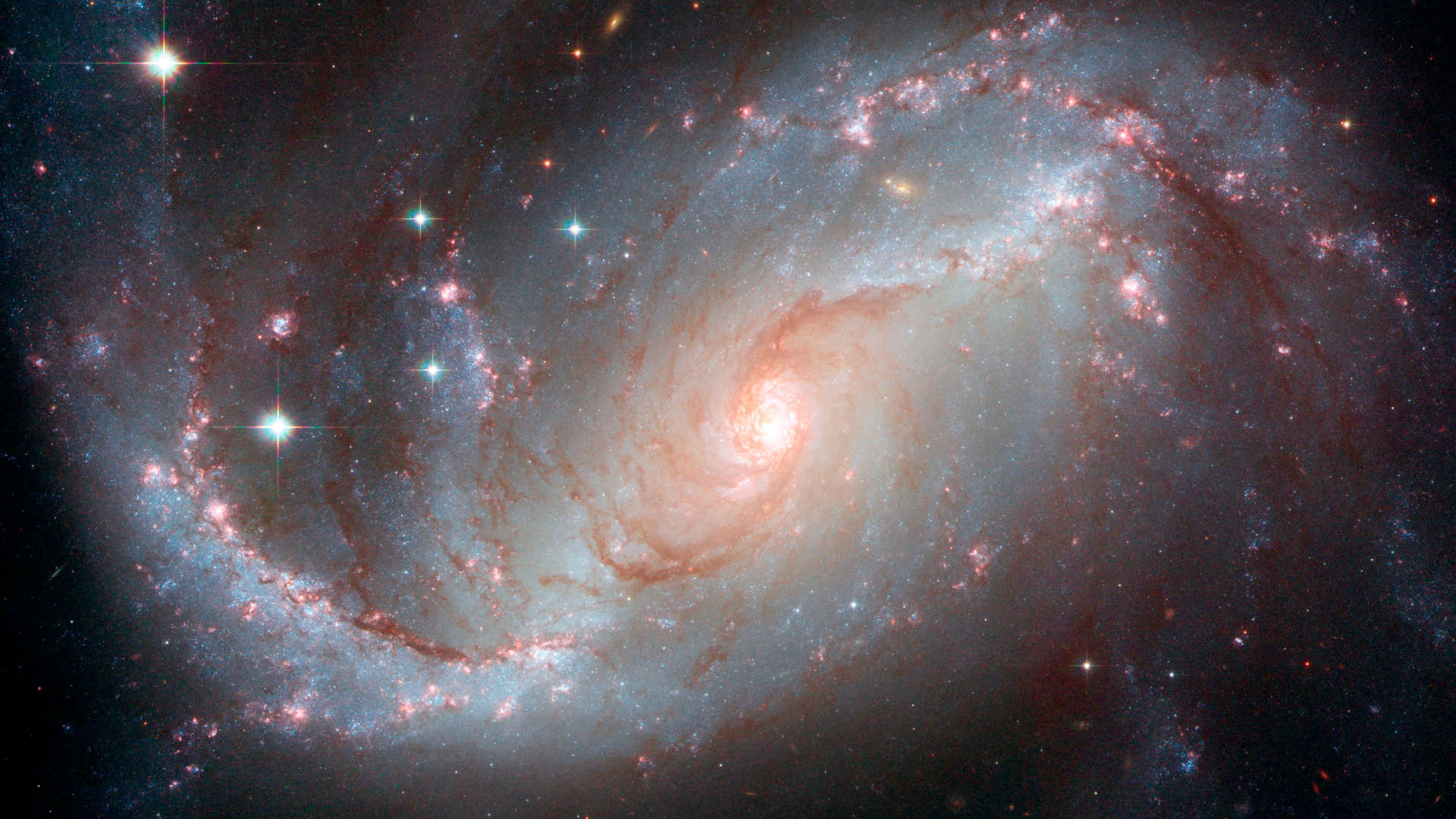As her father’s health began to decline, NPR science journalist Nell Greenfieldboyce went through a phase in which she was obsessed with finding a micrometeorite — a scrap of cosmic dust, smaller than a meteorite — on her roof. While grappling with her father’s mortality, she gathered water in a plastic bin and used a strong magnet to trawl through it for iron. Her family gently mocked her, but she didn’t stop: She borrowed her 12-year-old son’s microscope to examine dust she’d collected from her rain gutter, searching for a miniscule gray sphere that would reveal otherworldly debris on her ordinary home.
Meanwhile, her father’s last will and testament arrived in the mail. And still she persevered, desperate for some glimpse of the ephemeral, even though the tediousness of the project made her feel “like this hunt might emotionally wreck me.”

BOOK REVIEW — “Transient and Strange: Notes on the Science of Life,” by Nell Greenfieldboyce (W. W. Norton & Company, 224 pages).
Greenfieldboyce never did find a micrometeorite. But this period is one of the deeply personal and specific scientific preoccupations she explores in “Transient and Strange: Notes on the Science of Life,” a collection of essays in which she breaks out of the objective, impersonal journalistic mode that’s characterized her career and instead plumbs what the field of science has meant to her as an individual.
The personal is not a mode in which Greenfieldboyce was naturally comfortable: As a reporter on NPR’s technology beat, she expected to keep her private life private until the day a decade ago when she started nurturing a large spider that had appeared in her kitchen window. A friend encouraged her to write about this unlikely human-arachnid friendship for The Last Word on Nothing, a blog where science journalists dismantle the traditional walls between reportage and personal experience.
“I wasn’t sure I wanted people to know what I thought about in my kitchen while I watched a spider,” Greenfieldboyce writes. “But once I wrote that piece, I began to write about other personal experiences too — including ones that were more fraught.”
What emerged are the 10 essays in this collection, on topics ranging from fleas to the human heart to toaster ovens, by turns tender, tragic, and horrifying, and always chock-full of the personal reflections and humanistic analysis that are traditionally lacking in science journalism.
Greenfieldboyce found inspiration for several essays in that never-ending font of scientific curiosity: children. Her essay “Pum pum pum,” a brief piece on the human heart, opens with a scene in which she demonstrates for her daughter that the human heart is the size of a fist and explains that our hearts beat every second we are alive.
Greenfieldboyce explores topics ranging from fleas to the human heart to toaster ovens, by turns tender, tragic, and horrifying.
In “Everybody does it!” — an essay on the compulsive practice of doodling — her children imitate her longstanding fixation on filling spare scraps of paper with lines and shapes. And the first essay in the book, “The symbol of the tornado,” deals with her attempts to assuage her young son’s terror of storms, sparked by listening to a children’s novel called “Twister on Tuesday.” In this case, her son’s curiosity sparks something in Greenfieldboyce, who finds herself sucked into a dark obsession. She calls up Howard Bluestein, whose tornado research inspired the 1996 movie “Twister,” and asks him if her son needs to worry. Bluestein says no, explaining it’s “very, very, very difficult to get near a tornado,” a statement that seems especially apt for their family, who lives far from Tornado Alley in Washington, D.C.
Greenfieldboyce scrutinizes photographs of tornadoes and contemplates the array of descriptors that storm chasers use for these deadly, sublime storms: “cones, wedges, elephant trunks, needles, drill bits, stovepipes, and hourglasses.”
She pores over the autobiography of Ted Fujita, the pioneer of the tornado-ranking Fujita scale, who visited both Hiroshima and Nagasaki in the aftermath of the American atomic bombing in 1945 and noticed similarities between the starburst pattern of nuclear destruction and the damage wrought by downbursts, a weather pattern that instead of sucking things up like a tornado, violently pushes them down.
While her children and family provide heartfelt and sometimes bittersweet inroads into the book’s scientific queries, the collection’s most striking, disturbing moments involve Greenfieldboyce moving through the world as a girl and woman.
Support Undark Magazine
Undark is a non-profit, editorially independent magazine covering the complicated and often fractious intersection of science and society. If you would like to help support our journalism, please consider making a donation. All proceeds go directly to Undark’s editorial fund.
In a surprising and deeply effective twist, “The symbol of a tornado” turns to a scene from Greenfieldboyce’s New Jersey adolescence that caused her deep, lasting shame. Interspersed with descriptions of the eerie phenomena that visited Worcester, Massachusetts during a famously destructive tornado, Greenfieldboyce describes an ordinary afternoon in the 1980s, when she was 13 and answered the landline at her parents’ house. A man on the other line claimed to have abducted her mother and then ordered Greenfieldboyce to have phone sex with him.
This incident plunged her into a spiral of fear, leaving her unable to answer the phone or spend time home alone. This memory, which seemed “almost like natural disasters” to Greenfieldboyce, sheds new, sobering light on the ending scene in the essay, where she silently vows to her children that if a tornado ever did destroy their home, she would rebuild it so they would never know. She writes, “I will fix everything, replace everything, make everything perfect so that in the end no one will know — not even you.”
“A very charming young black hole” treads similar ground. Here, Greenfieldboyce braids the history of black hole science in the 1970s and 1980s, a time when “astronomers had started to make weird observations that could be explained by hungry, unseen companions lurking near certain stars,” with her own early sexual experiences, chiefly with a scene where Greenfieldboyce, a 12-year-old unsupervised on vacation, spends the night in the lobby of an inn exchanging flirty, innuendo-laden handwritten notes with a college-aged man.
In another disturbing denouement, we learn that the physicist Stephen Hawking made a bet with a fellow physicist about whether black holes existed, with a news magazine subscription at stake for Hawking, and a pornography subscription for his opponent. Hawking and his colleague fulfilled this bet the same month when Greenfieldboyce, at 16, lost her virginity to a decade-older graduate student at a lab where she was interning.
Greenfieldboyce ends the piece by comparing herself to a black hole, contemplating the swirl of lies and self-delusion she used to protect herself as a teenager. She writes: “Sometimes I think it might be possible to stare at this darkness long enough to get through, to discern what was there at the start. Other times, I know that’s just another lie.”
The power here lies in Greenfieldboyce’s juxtaposition of the misogynistic scientific establishment with the experiences of a curious young girl, herself passionate about science. Her frank examination of her personal experiences forces the reader to consider this traditionally male-dominated field and its discoveries in a new light.
Greenfieldboyce’s shorter essays, about topics such as recording ambient noise during interviews and about her parents’ toaster oven, are diverting, but in general they don’t pack as much of a punch as her long-form writing. Perhaps the most gripping piece is her final one, a 54-page essay with the provocative title “My eugenics project.”
In it, Greenfieldboyce charts her journey towards becoming a mother, a complex process given her husband’s polycystic kidney disease, a serious illness that can require transplants and lifelong reliance on drugs. She and her husband embark on a yearslong debate about whether to intervene to ensure their potential children don’t inherit the disease, a debate that causes Greenfieldboyce to wonder, “Was I secretly, at my core, a eugenicist?”
“Sometimes I think it might be possible to stare at this darkness long enough to get through, to discern what was there at the start. Other times, I know that’s just another lie.”
The essay charts well-known territory, describing the American establishment’s investment in eugenics before World War II, but also delves into more pressing, novel questions about whether embryo selection and gene editing are ethical or simply a modern twist on the same old ideas about what makes a life worth living.
Greenfieldboyce does not spare us the painful conversations and emotions that stem from this ethical quandary, nor the particularities of her situation: She navigates failed rounds of IVF, considers abortion, and contemplates the impossible task of weighing her love for her husband and her desire to be a mother against her fear of her children inheriting this disease.
One can imagine a version of this essay that simply reported the debates around gene editing and embryo selection — that version would not be nearly as gripping or powerful. “My eugenics project,” like most of the other pieces, reminds us that abstract discoveries and thorny ethical questions can come to life when animated by passion, love, or pain.
Greenfieldboyce’s project is a testament to the possibilities inherent in bringing history, science, and other academic disciplines out of the cold realm of the textbook or newspaper and into the complicated, vital space of an individual’s life.
Emily Cataneo is a writer and journalist from New England whose work has appeared in Slate, NPR, the Baffler, and Atlas Obscura, among other publications.











